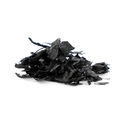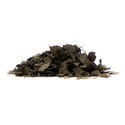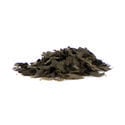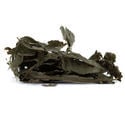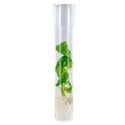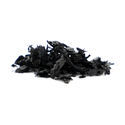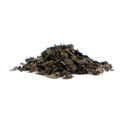-
Seedshop
-
Feminized
Cannabis seeds -
Autoflowering
Cannabis Seeds -
Regular
Cannabis Seeds -
F1 Hybrid
Cannabis Seeds -
CBD
Cannabis Seeds -
Zamnesia
Cannabis Seeds
-
Top 10’s
- Top 10 Feminized Seeds
- Top 10 Autoflowering Seeds
- Top 10 Regular Seeds
- Top 10 USA Cannabis Strains
- Top 10 Zamnesia Seeds
-
Favourites
- Beginner Strains
- Below 1% THC
- Classic Cannabis Strains
- Cup Winners
- F1 Hybrids
- Fast Flowering Seeds
- High CBD Strains
- High THC Strains
- Mix Packs
- Zamnesia Exclusive Collabs
-
-
Headshop
-
Vaporshop
- Spare Parts & Accessories
- AirVape X
- AirVape XS GO (2021)
- Arizer Air MAX
- Arizer Extreme Q
- Arizer Solo 2
- Arizer V-Tower
- Arizer XQ2
- Boundless CFC 2.0 Vaporizer
- Boundless CFX
- Boundless TERA (V3)
- CRAFTY+
- DaVinci IQC
- Dr. Dabber Boost EVO
- DynaVap Omni 2021
- DynaVap VapCap "M" PLUS 2023
- DynaVap VapCap 'M' 2021
- DynaVap VonG (i) Titanium
- Dynavap The "B" Series
- Flowermate Aura
- Flowermate Cap Pro
-
Healthshop
-
Smartshop
-
Shroomshop
-
Growshop
-
Seedshop
All CategoriesSeedshop
- Autoflower Seeds
- Feminized Cannabis Seeds
- Zamnesia Seeds
- Zamnesia's Top 10
- CBD Seeds
- F1 Hybrids
- Seed Banks
- Mix Packs
-
Popular Strain Types
- Zamnesia Exclusive Collabs
- Classic Cannabis Strains
- Amnesia Seeds
- Haze Seeds
- Skunk Seeds
- Kush Seeds
- Purple Seeds
- Blueberry Seeds
- Cheese Seeds
- Diesel Seeds
- White Widow Seeds
- Gorilla Seeds
- Northern Lights Seeds
- Granddaddy Purple Seeds
- OG Kush Seeds
- Blue Dream Seeds
- Lemon Haze Seeds
- Bruce Banner Seeds
- Gelato Seeds
- Sour Diesel Seeds
- Jack Herer Seeds
- Girl Scout Cookies Seeds (GSC)
- Wedding Cake Seeds
- Zkittlez Seeds
- Pineapple Express Seeds
- Chemdawg Seeds
- Hindu Kush Seeds
- Mimosa Seeds
- F1 Hybrids
- Mix Packs
- Cup Winners
- Beginner Strains
- High THC Strains
- Fast Flowering Seeds
- Regular Cannabis Seeds
- USA Cannabis Strains
- Cup Winners
- Seedfinder
-
Vaporshop
All CategoriesVaporshop
- Top 10 Vaporizers
- Spare Parts & Accessories
- AirVape X
- AirVape XS GO (2021)
- Arizer Air MAX
- Arizer Extreme Q
- Arizer Solo 2
- Arizer V-Tower
- Arizer XQ2
- Boundless CFC 2.0 Vaporizer
- Boundless CFX
- Boundless TERA (V3)
- CRAFTY+
- DaVinci IQC
- Dr. Dabber Boost EVO
- DynaVap Omni 2021
- DynaVap VapCap "M" PLUS 2023
- DynaVap VapCap 'M' 2021
- DynaVap VonG (i) Titanium
- Dynavap The "B" Series
- Flowermate Aura
- Flowermate Cap Pro
- Flowermate Slick
- Flowermate V5.0S Pro
- G Pen Elite II
- G Pen Micro+
- G Pen Roam
- Hyer Big-E Rig
- MIGHTY+
- PAX Mini
- PAX Plus
- PLENTY
- Pax 3 Vaporizer
- Puffco Peak PRO Smart Rig
- Puffco Peak Smart Rig
- Puffco Plus
- Storm Vaporizer
- The Proxy (Puffco)
- VOLCANO CLASSIC
- VOLCANO HYBRID
-
Smartshop
All CategoriesSmartshop
- Top 10 Smartshop
- Zamnesia Gift Cards
- After Party
- Aphrodisiacs
- Aromatherapy
- Blue Lotus
- CBD Vape Juice
- Capsule Machines
- Crystals, Gemstones & Minerals
- Dream Herbs
- Drug Tests
- Extracts
- Happy Caps
- Herbal Tea
- Herbs & Seeds
- Incense
- Kanna
- Kratom
- LSA Seeds
- Mescaline Cacti
- Microdosing
- Nootropics
- Relaxing
- Salvia divinorum
- Smart Seeds
- Stimulants
- Supplements
- Tinctures
- Vape Herbs
-
TRIBE
All CategoriesTRIBE
- My Membership
- Spend Gift Points
- TRIBE Sale
- Exclusive products
- Earn Extra Gift Points
-
TRIBE
- Early Access
- Refer a Friend
- Information
-
TRIBE
-
Language
 United States
United States
Tuesday, 21 October and Monday, 27 October 2025*
Salvia divinorum: Everything you need to know

Salvia is a weird and wonderful hallucinogen that originates in South America. In this article, we're going in-depth and giving a comprehensive overview of everything you need to know about Salvia divinorum, its effects, history, dosage, and more.
Did you know that Salvia divinorum is one of the most potent natural hallucinogens known to science? Despite its legal ambiguity and fleeting but intense psychoactive effects, this fascinating plant has captivated spiritual seekers, psychonauts, and researchers alike.
Known for producing powerful, reality-bending experiences in just minutes, Salvia divinorum has roots in ancient shamanic practice. Today, it continues to spark debate in legal, medical, and cultural circles. But what exactly is Salvia, and what should you know before exploring it?
In this comprehensive guide, we’ll look at the history, effects, legality, uses, and risks of Salvia divinorum. Whether you’re curious about Salvia's effects, legality, dosage, or where to buy Salvia online safely, this guide covers it all.
What is Salvia divinorum?
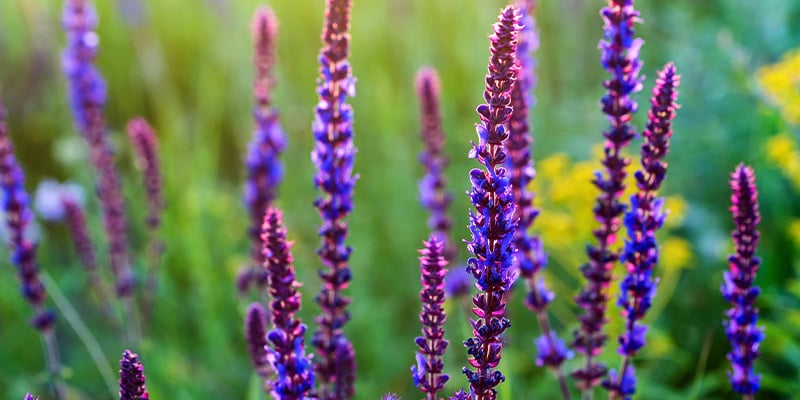
Before you explore Salvia's effects, it helps to understand where this plant comes from and why it's been used for centuries. This section explains Salvia’s origins, traditional uses, and the unique chemical properties that set it apart from other psychoactive plants.
Origins and traditional use
Salvia divinorum grows naturally in the misty cloud forests of Oaxaca, Mexico. The Mazatec people have long considered it sacred, referring to it as "ska María Pastora". For generations, they’ve used the plant in rituals aimed at healing, divination, and spiritual communion.
Traditional ceremonies often involve chewing fresh Salvia leaves in quiet, dark settings. The plant’s ability to induce vivid visions and altered states of consciousness plays a central role in Mazatec spiritual practice. Unlike Western recreational use, these traditional rituals are solemn and guided by cultural wisdom.
Mazatec healers report using Salvia when mushrooms or morning glory seeds are unavailable, indicating its significance as a complementary tool in their spiritual pharmacopeia. The spiritual connection fostered through Salvia is often described as deeply feminine and introspective, and many regard the plant as a conduit to the divine.
Botanical classification and properties
Salvia divinorum belongs to the mint family (Lamiaceae) and shares its genus with common sage. However, it’s chemically and pharmacologically unique. The plant features large green leaves, square stems, and occasionally violet flowers.
What sets Salvia apart is its active compound, salvinorin A. This molecule is a potent kappa opioid receptor (KOR) agonist, unlike serotonergic psychedelics such as psilocybin or LSD. Its mechanism results in a different kind of hallucinogenic effect—shorter, often more intense, and distinctly disorienting.
Interestingly, salvinorin A is active at microgram doses, which places it among the most potent naturally occurring psychoactive compounds. It is non-nitrogenous, setting it apart from almost all other hallucinogens. This unique structure has intrigued pharmacologists and neuroscientists, sparking research into how it interacts with the brain.
How does Salvia divinorum work?
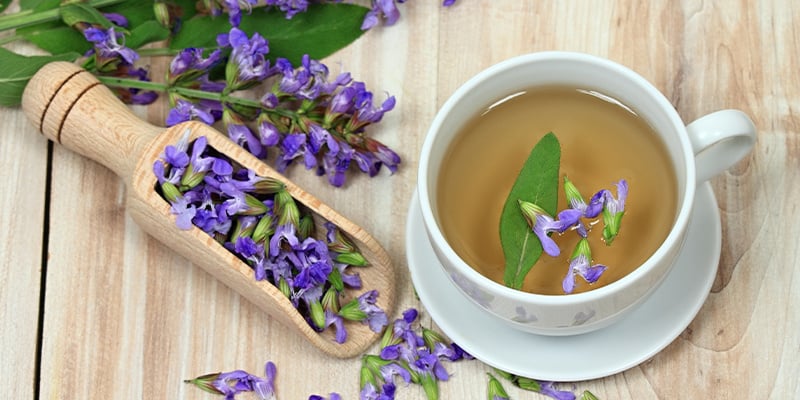
Salvia doesn’t operate like other psychedelics. Its effects are intense, fast-acting, and often bizarre. In this section, we explain how Salvia works in the brain and outline what you can expect during a typical Salvia experience.
Mechanism of action in the brain
When you inhale or chew Salvia, salvinorin A quickly crosses the blood-brain barrier and binds to kappa opioid receptors. These receptors are involved in mood, perception, and pain regulation. This unique receptor affinity is why Salvia doesn’t feel like LSD, psilocybin, or mescaline.
Salvinorin A doesn’t produce the euphoria or visual trails common with classic psychedelics. Instead, users often report full-blown dissociation, time looping, or encounters with entities. The trip can be uncomfortable or enlightening, depending on your mindset, setting, and dose.
Researchers continue to study salvinorin A's effects on the brain, as understanding its mechanisms of action may offer insight into the neural basis of dissociation and consciousness. Some studies even explore its potential in understanding psychiatric conditions such as schizophrenia, where perception and reality become distorted. We’ll look at the research into Salvia divinorum in more detail below.
Effects of Salvia divinorum
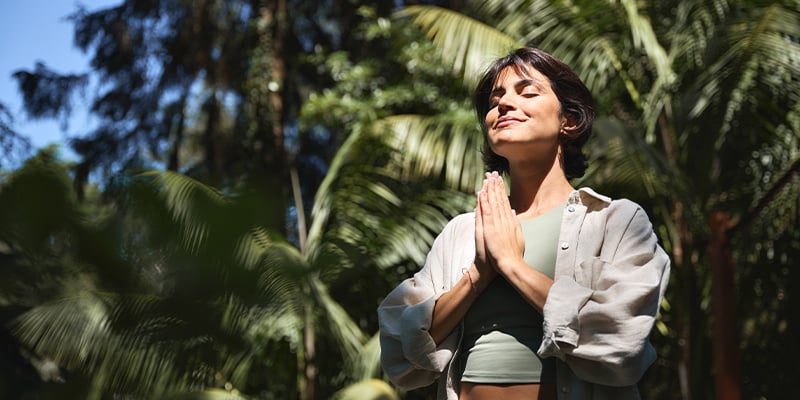
Salvia’s effects kick in rapidly—within 30 seconds when smoked—and last around 5 to 20 minutes. But don’t let the short duration fool you—these minutes can feel like an eternity.
Common short-term effects of Salvia divinorum may include:
- Intense visual distortions
- Out-of-body experiences
- An altered sense of time and self
- Laughter or vocal outbursts
- Disorientation or confusion
The long-term effects of Salvia are still under investigation, but regular high-dose use could have lingering psychological impacts.
So, how long does Salvia’s high last? The most intense phase usually ends within 10 minutes, followed by a gradual return to baseline over the next 10 to 20 minutes.
Some users describe the afterglow as calm and introspective, while others report lingering confusion. Journaling or discussing the experience with a trusted friend may help with integration after a Salvia trip.
The Salvia experiential scale
Salvia trips can vary wildly in intensity. To help make sense of them, researchers and experienced users developed a scale to classify the various levels of the experience.
Levels of the Salvia experience
The following sections describe the different levels of Salvia's unique effects:
How to interpret the scale
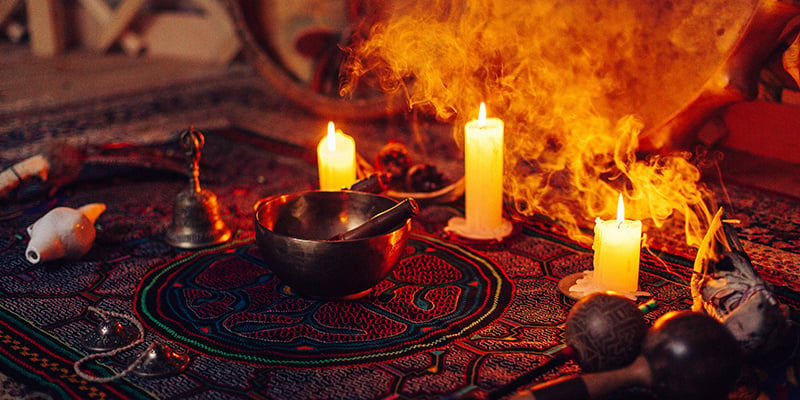
Set, setting, dosage, and personal sensitivity all affect how far you go on the scale. A low dose of Salvia in a safe space may result in a pleasant, introspective state. A high dose in a chaotic environment, however, could lead to panic.
Understanding this scale helps you gauge what to expect and how to approach the Salvia experience with caution. Some users also find it helpful to record their experience using audio or video immediately after the trip. This can aid memory recall and provide insight into the emotional or symbolic content of the journey.
Salvia divinorum methods of use and dosage
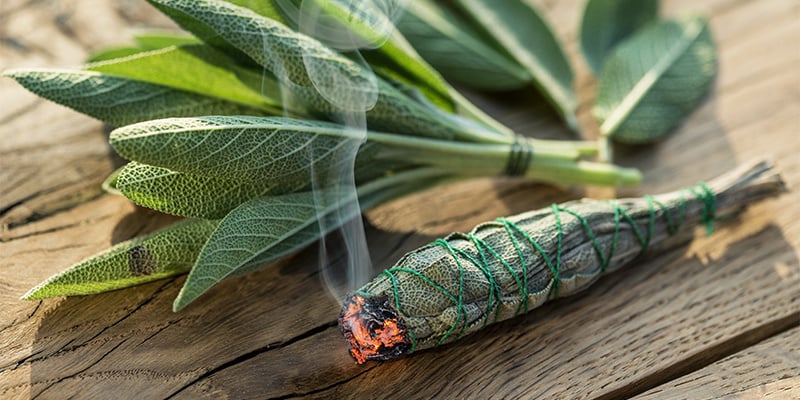
You can consume Salvia in several ways, each with its own onset time and intensity. This section outlines the most common methods and how they influence the experience.
Common consumption methods
The following methods of consumption are those most commonly used for Salvia:
Smoking dried leaves
The most popular method. Smoking dried leaves produces rapid and intense effects and is best suited for experienced users. Dried leaves should be packed into a pipe or bong and smoked in a few hits—do not roll them into a joint. Also, be aware that most dried salvia products meant for smoking are in fact extremely strong extracts. See below for more information about consuming Salvia extracts.
Chewing fresh leaves (quid method)
A traditional and gentler method, chewing Salvia produces effects that come on slowly but last longer and tend to be more manageable. Chewing leaves generally doesn't lead to the total unreality of smoking salvia, but it can still make for an interesting and insightful hallucinogenic experience.
Extracts and tinctures
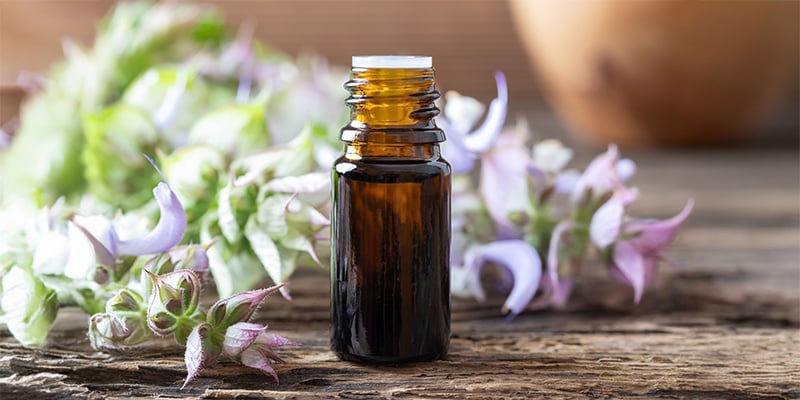
These concentrated forms of Salvia offer higher potency than regular leaves. Labels often show strength multipliers like 5x, 10x, or 20x. You should exercise extreme caution when using these products. Just because they are easily accessible, it doesn't mean they're a trivial product—they’re concentrated versions of the most powerful psychoactive substance on earth, after all. You've been warned!
Some Salvia tinctures are alcohol-based, while others are made with glycerine or acetone. Each preparation method affects potency and onset. Always start with minimal amounts to gauge sensitivity.
Recommended dosage guidelines
While we don’t offer specific Salvia dosage advice, some general principles to consider include:
- Start low, especially with extracts.
- Understand that higher doses amplify trip intensity and risk. Misjudging your dose can quickly lead to overwhelming experiences or psychological distress. Responsible preparation is key.
- Avoid redosing during the same session.
- Environmental safety is crucial. Create a safe environment by removing sharp objects and securing furniture. Consider using padded mats to prevent injury. A calm, dark room is ideal for minimising sensory input during a Salvia trip.
Is Salvia divinorum legal?
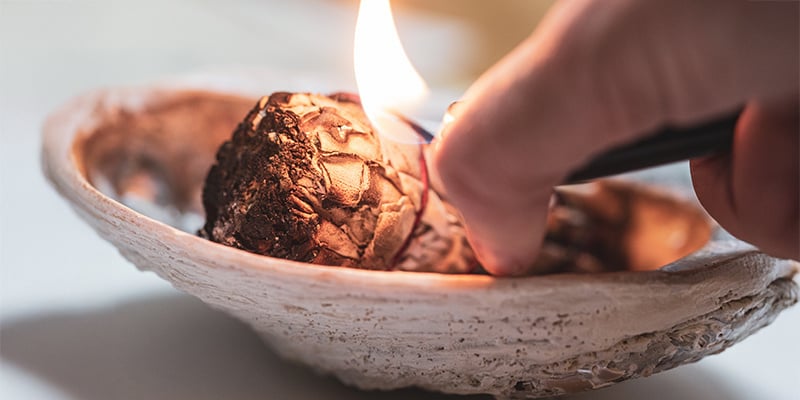
Salvia’s legal status varies widely around the world. Some regions allow possession and sale, while others impose strict bans. Here's what you need to know before you buy Salvia online or use it in your country.
Global legal status
- United Kingdom: Banned under the 2016 Psychoactive Substances Act.
- United States: Legal in some states, restricted or banned in others.
- Canada: Legal to possess but illegal to sell for consumption.
- Australia and New Zealand: Classified as a controlled substance.
- EU: Mixed status depending on country.
Always check your local laws before obtaining or using Salvia.
Why is Salvia regulated?
Authorities regulate Salvia for several reasons, including:
- Its intense and unpredictable effects.
- Concern over unsupervised recreational use.
- Potential risks to mental health and public safety.
- Although Salvia isn’t known to be addictive, its powerful effects have led governments to restrict its use as a precaution.
Salvia divinorum risks and side effects
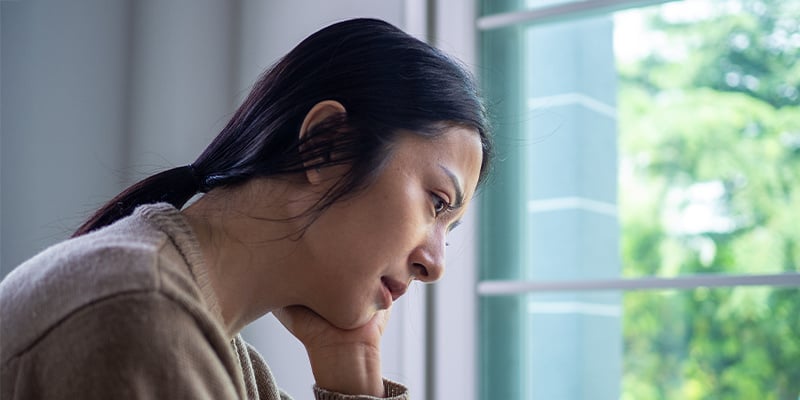
Like any psychoactive substance, Salvia carries risks. Understanding these can help you decide whether it’s right for you and minimise harm.
Psychological risks:
- Sudden and severe disorientation
- Panic, anxiety, or paranoia during the trip
- Flashbacks or lingering mental fog
- Difficulty distinguishing hallucination from reality
Sensitive users or those with pre-existing mental health issues should proceed with great caution.
Physical side effects:
- Loss of coordination
- Dizziness or vertigo
- Nausea
- Muscle weakness or slurred speech
While not dangerous, the physical side effects of Salvia can lead to injury if you're not in a safe environment.
Long-term effects and dependence

Research so far shows that Salvia is not physically addictive, and most users don’t feel compelled to use it repeatedly. That said, heavy or repeated use may result in lingering psychological effects. As with all powerful substances, moderation is key.
Potential therapeutic uses of Salvia divinorum
Despite its controversial status, Salvia shows some promise in medical research. Below we'll explore the very limited scientific research into Salvia's potential therapeutic applications.
Scientific research on medical applications

A 2016 study explored how salvinorin A's affinity to opioid receptors might affect those with depression (Taylor 2016). Whilst it concluded that much more research was necessary, the study pointed out that Salvia may provide a novel and effective therapeutic pathway for depression. Its unique action on kappa opioid receptors, in particular, makes it a candidate for treatments that don’t rely on traditional opioids or serotonergic pathways.
Future studies and ethical concerns
Despite promising signs, Salvia remains difficult to study due to legal restrictions and its unpredictable effects. Scientists must balance potential benefits against ethical considerations and the need for controlled environments. Unfortunately, more clinical trials are needed to assess Salvia’s therapeutic potential.
Where to buy Salvia divinorum and safety considerations
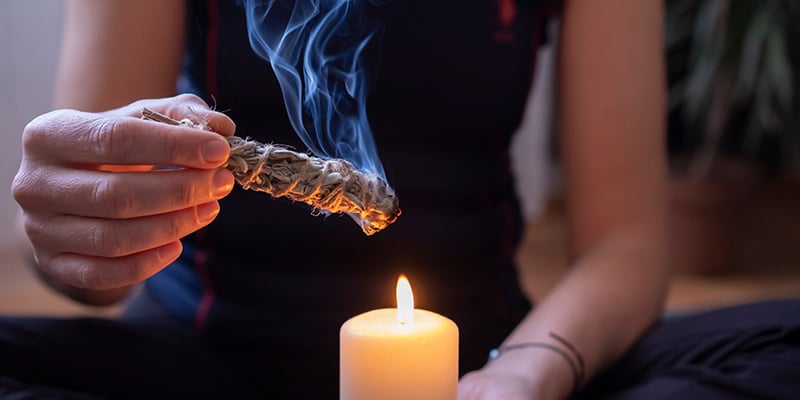
If you choose to explore Salvia, make sure you do so responsibly. Learn how to find a reputable Salvia vendor and use the plant safely below:
Finding a reputable vendor
Not all Salvia vendors are created equal. When shopping for Salvia online, remember to:
- Look for lab-tested products
- Read verified customer reviews
- Avoid sites that make outlandish claims
- Choose vendors that provide clear dosage and strength information
- Research before you buy—especially with strong extracts
Safe use practices
- Use Salvia in a safe, calm, and familiar setting
- Have a sober sitter present to supervise you during a Salvia trip
- Never mix Salvia with alcohol or other drugs
- Take time to reflect and integrate after your experience
- Treat Salvia with the same respect you'd give any powerful psychoactive. It’s not a party drug—it’s an ancient tool traditionally used for introspection, transformation, and, potentially, healing.
Learn your way around Salvia divinorum
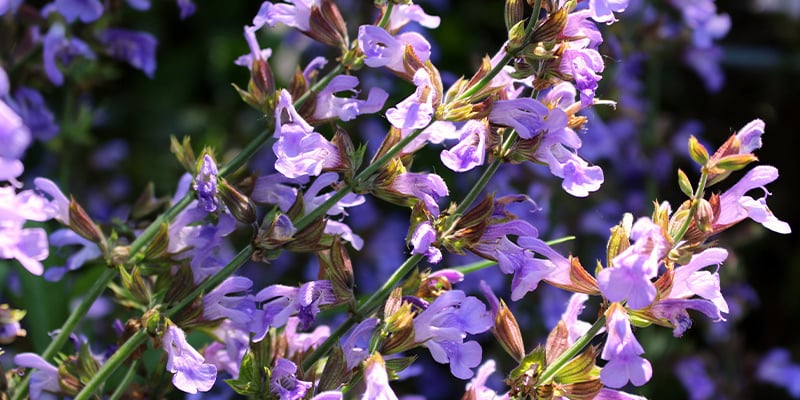
Salvia divinorum is unlike any other psychedelic. It's fast, intense, and deeply strange—but it also holds a unique place in the world of ethnobotany and consciousness exploration.
Remember that the legality of Salvia varies from country to country, so do your research before buying it! Also, note that Salvia is an understudied drug, meaning there's not a lot of certainty about how safe it is in the long term—though the little available evidence suggests it has a decent safety profile.
If you're drawn to Salvia divinorum, do your homework and remember—respect the plant, start slow, and prioritise safety. When used mindfully, Salvia can be a profound teacher.

- George T Taylor, & Francesca Manzella. (2016 Feb). Kappa Opioids, Salvinorin A and Major Depressive Disorder - https://pmc.ncbi.nlm.nih.gov
- France
- Germany
- International
- Italy
- Netherlands
- Portugal
- Spain
- United Kingdom
- United States
Salvia products
-
€ 29,95 € 20,97
-
€ 11,95 € 8,37
-
€ 17,95 € 12,57
-
€ 4,95 € 3,47
-
€ 39,99 € 27,99+20 Extra Gift Points
-
€ 24,95 € 17,47
-
€ 24,95 € 17,47
You might also like
-

 4 min
22 November 2020
Salvia Divinorum: The Do's And Don'ts
Whether you're a seasoned expert or total novice, keep reading as we break down the most important things to consider before any salvia trip. ...
4 min
22 November 2020
Salvia Divinorum: The Do's And Don'ts
Whether you're a seasoned expert or total novice, keep reading as we break down the most important things to consider before any salvia trip. ...
-
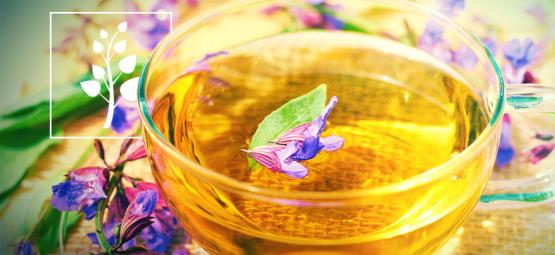
 3 min
13 June 2019
How To Make Salvia Divinorum Tea
Salvia is unique among psychedelics, both in its effects profile and its pharmacology. It's often viewed as bizarre rather than pleasant, but for intrepid explorers of the mind, it's a vital part of t ...
3 min
13 June 2019
How To Make Salvia Divinorum Tea
Salvia is unique among psychedelics, both in its effects profile and its pharmacology. It's often viewed as bizarre rather than pleasant, but for intrepid explorers of the mind, it's a vital part of t ...
-
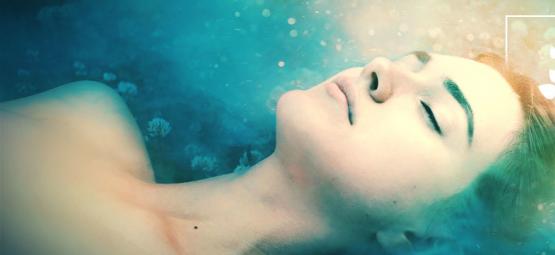
 2 min
3 June 2018
Why Does Salvia Make You Trip So Hard?
Salvia is an extremely potent atypical hallucinogen. It is well known for its often jarring and full on trips, leading it to be used as more of a spiritual aid than a recreational hallucinogen. We tak ...
2 min
3 June 2018
Why Does Salvia Make You Trip So Hard?
Salvia is an extremely potent atypical hallucinogen. It is well known for its often jarring and full on trips, leading it to be used as more of a spiritual aid than a recreational hallucinogen. We tak ...
-
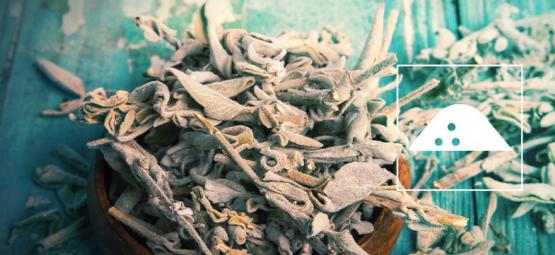
 3 min
9 April 2014
How To Make Salvia Divinorum Extract From Dry Leaves
If you grow your own Salvia plants, why not make your own extracts? With a little kitchen chemistry you can easily produce a potent concentrate yourself. ...
3 min
9 April 2014
How To Make Salvia Divinorum Extract From Dry Leaves
If you grow your own Salvia plants, why not make your own extracts? With a little kitchen chemistry you can easily produce a potent concentrate yourself. ...
Categories
-
Seedshop
- Feminized Cannabis Seeds
- Autoflower Seeds
- Regular Cannabis Seeds
- F1 Hybrids
- CBD Seeds
- Zamnesia Seeds
- Top 10 Autoflowering Seeds
- Top 10 Regular Seeds
- Top 10 USA Cannabis Strains
- Top 10 Zamnesia Seeds
- Top 10 Feminized Seeds
- Beginner Strains
- Below 1% THC
- Classic Cannabis Strains
- Cup Winners
- F1 Hybrids
- Fast Flowering Seeds
- High CBD Strains
- High THC Strains
- Mix Packs
- Zamnesia Exclusive Collabs
- Amnesia Seeds
- Blueberry Seeds
- Cheese Seeds
- Diesel Seeds
- Gorilla Seeds
- Haze Seeds
- Kush Seeds
- Purple Seeds
- Skunk Seeds
- White Widow Seeds
- Northern Lights Seeds
- Granddaddy Purple Seeds
- OG Kush Seeds
- Blue Dream Seeds
- Lemon Haze Seeds
- Bruce Banner Seeds
- Gelato Seeds
- Sour Diesel Seeds
- Jack Herer Seeds
- Girl Scout Cookies Seeds (GSC)
- Wedding Cake Seeds
- Zkittlez Seeds
- Pineapple Express Seeds
- Chemdawg Seeds
- Hindu Kush Seeds
- Mimosa Seeds
- Zamnesia Seeds
- ACE Seeds
- Advanced Seeds
- Amsterdam Genetics
- Anesia Seeds
- Auto Seeds
- Barney's Farm
- Big Buddha Seeds
- Bomb Seeds
- BSB Genetics
- BSF Seeds
- Buddha Seeds
- Bulldog Seeds
- The Cali Connection Seeds
- Cannarado Genetics
- CannaBioGen
- CBD Crew
- CBD Seeds
- Compound Genetics
- The Dank Seeds
- Dark Horse Genetics
- Delicious Seeds
- Devil Harvest Original
- Dinafem
- DNA Genetics
- Doctor's Choice
- Dr. Underground
- Dutch Passion
- Elite Seeds
- Eva Seeds
- Exotic Seed
- Expert Seeds
- FastBuds
- Female Seeds
- Fenocan
- Flash Auto Seeds
- French Touch Seeds
- Garden of Green
- GeneSeeds
- Genehtik Seeds
- G13 Labs
- Grass-O-Matic
- Greenhouse Seeds
- Grow Your Own (DNA)
- Growers Choice
- Homegrown Fantaseeds
- House of the Great Gardener
- Humboldt Seed Company
- Humboldt Seed Organization
- Kalashnikov Seeds
- Kannabia
- The Kush Brothers
- Light Buds
- Little Chief Collabs
- Medical Seeds
- Ministry of Cannabis
- Mr. Nice
- Nirvana Seeds
- Original Sensible
- Paradise Seeds
- Perfect Tree
- Pheno Finder
- Philosopher Seeds
- Positronics Seeds
- Purple City Genetics
- Pyramid Seeds
- Rare Dankness
- Reggae Seeds
- Reserva Privada
- Resin Seeds
- Ripper Seeds
- Royal Queen Seeds
- Sagarmatha Seeds
- Samsara Seeds
- Seedstockers
- Sensation Seeds
- Sensi Seeds
- Serious Seeds
- Silent Seeds
- Solfire Gardens
- Soma Seeds
- Spliff Seeds
- Strain Hunters
- Sumo Seeds
- Super Sativa Seed Club
- Super Strains
- Sweet Seeds
- TICAL
- T.H. Seeds
- Top Tao Seeds
- Vision Seeds
- VIP Seeds
- White Label
- World Of Seeds
- Zativo Seeds
- Seed Banks
-
Headshop
-
Vaporshop
-
Healthshop
-
Smartshop
- Top 10 Smartshop
- Zamnesia Gift Cards
- After Party
- Aphrodisiacs
- Aromatherapy
- Blue Lotus
- CBD Vape Juice
- Capsule Machines
- Crystals, Gemstones & Minerals
- Dream Herbs
- Drug Tests
- Extracts
- Happy Caps
- Herbal Tea
- Herbs & Seeds
- Incense
- Kanna
- Kratom
- LSA Seeds
- Mescaline Cacti
- Microdosing
- Nootropics
- Relaxing
- Salvia divinorum
- Smart Seeds
- Stimulants
- Supplements
- Tinctures
- Vape Herbs
-
Shroomshop
-
Growshop
- Top 10 Growshop
- Top 10 Plant Seeds
- All Seeds
- Cacti
- Chili & Pepper Seeds
- Companion Plants
- Edible Plant Seeds
- Exotic Seeds
- Flower Seeds
- Fruit Seeds
- Herb Seeds
- Interior Plant Seeds
- Microgreens
- Psychoactive Plant Seeds
- Sprouting
- Vegetable Seeds
- Wellness Plant Seeds
- After Harvest
- Climate Control
- Fertilizer
- Grow Tents
- Harvest, Dry & Cure
- LED Grow Lights
- Plant Seeds
- Propagation
-
Merchandise
-
Sale section
Account
Information
Our Offers
Our website won't work without these cookies activated. Therefore functional cookies can't be disabled.
Table of contents
- What is Salvia divinorum?
- How does Salvia divinorum work?
- The Salvia experiential scale
- Salvia divinorum methods of use and dosage
- Is Salvia divinorum legal?
- Salvia divinorum risks and side effects
- Long-term effects and dependence
- Where to buy Salvia divinorum and safety considerations
- Learn your way around Salvia divinorum















